2010 Chevrolet Camaro SS

| The Good: – Cool retro-modern styling – Great grip and handling – Seriously powerful engine |
The Bad: – Hard plastic interior – Shallow luggage boot – Outward visibility |
We’ve already tested the Camaro before, but it was a V6 version. With a sixer under the bonnet, it is a competent car, sporting even, but does not rise above the level of homely coupes. So when we received the Camaro SS from the General, we didn’t expect it to be much different, even though we’d driven it briefly before. However, it turned out to be at a whole different ballgame, especially considering we were surprised to find it had a manual shifter.
In terms of how the SS looks, it is so similar to the V6 model that we’ll save time by just copy-pasting bits and pieces of the other review. It is as stunning as ever, even if appearing a bit loose around the panel gaps. Buyers at the lower rung will be happy to note that their V6 looks almost exactly the same as this top-end model, save for larger rims, rear lip spoiler and a fake bonnet vent up front on the SS. The chop-top Camaro is a big car in person, but that does not necessarily translate to a massive cabin. There is enough space for a couple of six-footers if the front seats are moved all the way down, but the roof is still a bit too close to the head for comfort. And let’s not even bother with the rear legroom. There isn’t any.
The sporting front seats are well-bolstered, beautifully trimmed with leather in the SS, and power-adjustable for the driver. The passenger seat offers quick manual access to the rear, but the tight opening leads to a tighter rear seat. The cargo trunk has a similarly small opening, offering a very long but ultimately shallow luggage area. Of course, there is no shortage of cup-holders, with two exposed ones up front, just ahead of the central cubby-cum-armrest.
Despite its near-premium positioning, all Camaro versions come with a hard-plastic interior similar to that of sub-compact cars nearly half the price. But the stylised dashboard is pretty interesting, if ergonomically-challenged, with some big knobs and some tiny buttons. Our SS even has four gauges in front of the shifter, nearly useless because they are hard to read. Also, the much-hyped optional bluish “mood” lighting along the doors means being saddled with shiny-smooth hard-plastic door panels, colour-coded to match the seats.
Tech features are remarkably few, limited to power windows, electric mirrors, keyless entry, cruise control, front and side-curtain airbags, a seemingly-decent manual a/c and an above-average CD/MP3 stereo with USB port. Our Camaro SS also has a CD changer, sunroof, HID headlights with “halo” rings, rear parking sensors and not much else. There are no fancy navigation screens or push-start buttons here.
As seems customary with muscle cars, the reason to overlook this car’s deficiencies is the fire-breathing monster of an engine under the bonnet. The massive 6.2-litre V8 engine produces 426 hp at 5900 rpm and 569 Nm of torque at 4600 rpm. Weighing in at a portly 1779 kg, all that power makes the Camaro feel as light as an angry feather. Mated to a short-throw 6-speed manual, our tester was worlds more entertaining than any automatic exotic like the R8 or the GT-R, even if it wasn’t faster. But launching the rubber-burning Camaro is a tricky affair. After a few tries with the traction control on, we were netting a 0-100 kph time of only 7 seconds. We turned it off and, after numerous attempts, the best we managed was 6.3 seconds, balancing the easily-induced wheelspin with the right foot and keeping the car’s rear-end straight with sweaty hands. We doubt anyone here can do better than what we managed in May weather out on a hot desert road.
The gearbox is a firm click-click short-throw affair, though it can feel notchy at times. The clutch is light enough, but it is too springy, occasionally making it complicated to balance in crawling traffic, though we never stalled the car. Driving fast is satisfying, and we quickly became experts in shifting gears under half a second. We also started second-guessing ourselves at slow speeds when the shifter wouldn’t go from first to second, but it turns out there is a stupid “fuel-saving” system where the shift gate blocks out second and third at very low speeds, forcing you to shift from first to fourth. It can be defeated by giving a little more throttle, but we only discovered this goofy gimmick when we noticed a gauge-cluster message urging us to do a 1st-to-4th shift. Anyway, we still logged an average SUV-like fuel consumption of 16.8 litres/100 km, but at one point we decided to drive as conservatively as possible and got it down to an average of 8.7 litres/100 km. It’s all about how you control your right foot.
The Camaro SS drives like a proper sports car, with its weighted power steering, which offers decent feedback and direct turn-ins, but on-centre feel is slightly sloppy. Corners feel pretty much flat, with unnoticeable body roll and oodles of available grip from the 245/45 front and 275/40 rear rubbers, as long as the throttle is precisely controlled. We’d urge amateurs to always keep their traction control turned on. Huge ABS-assisted Brembo brakes with vented discs, visible through the 20-inch alloys, are eye-poppingly effective and can haul down the car within a couple of seconds from 120 kph.
The Camaro SS is still an acceptably comfortable cruiser as well, better than the Mustang GT or the Corvette Z06. The ride is firm, but fairly compliant on most surfaces. There is a bit of wind noise as well as moderate road noise, but the loudest noise-maker is the engine, which roars the pants off bystanders at full-throttle. But thick A-pillars and a high rear severely limit visibility, and the lack of parking sensors on lower models may mean those same bystanders can get a laugh at your expense in the mall parking lot.
The manual-trannied Camaro SS is a mind-blowing sports car that can be a riot on open roads and long drives, but can also be a bit of a handful inside city limits, not because of its gearbox, but because of its other quirks related to visibility and general jumpiness in stop-start driving. If you are ready to tame one of these, it is a great buy, because it seems ridiculous to offer these cars with an automatic, with the same inherent quirks to boot.
| Price Range: Dh 160,000-180,000 Current Model Introduced in: Body Styles: Engines: Transmissions: Setup: Suspension: |
Brakes: Front: discs Rear: discs Curb Weight: Length: Wheelbase: Top Speed: Test Acceleration 0-100 kph: Observed Test Fuel Economy: |
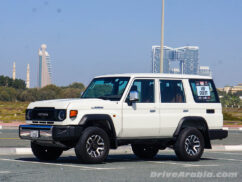
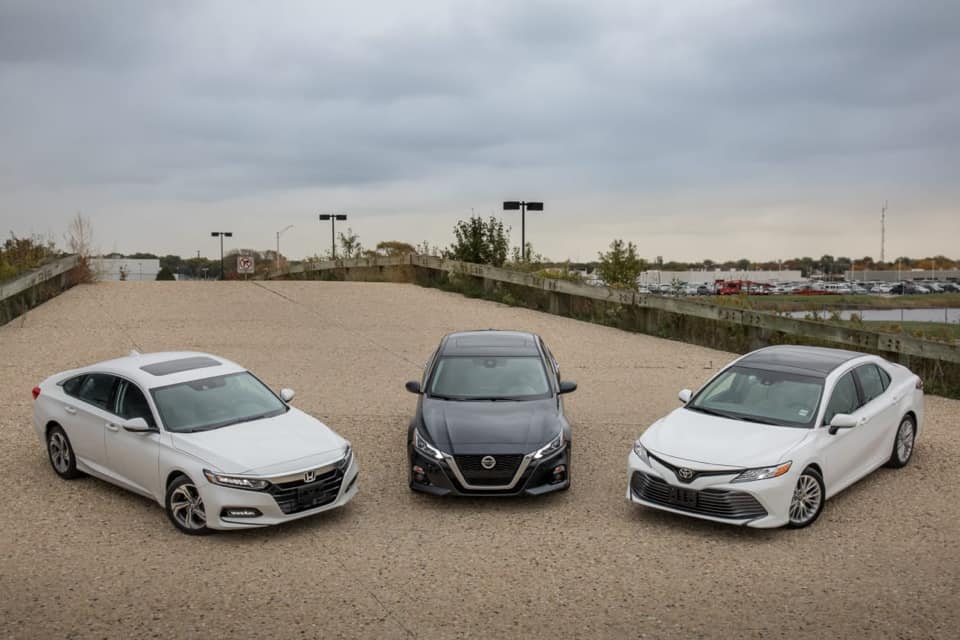
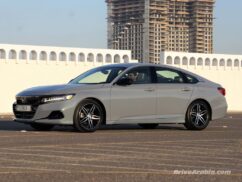
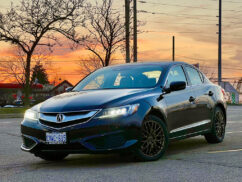
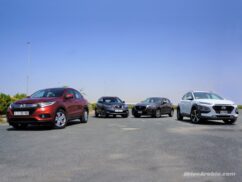
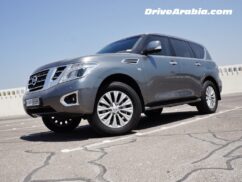
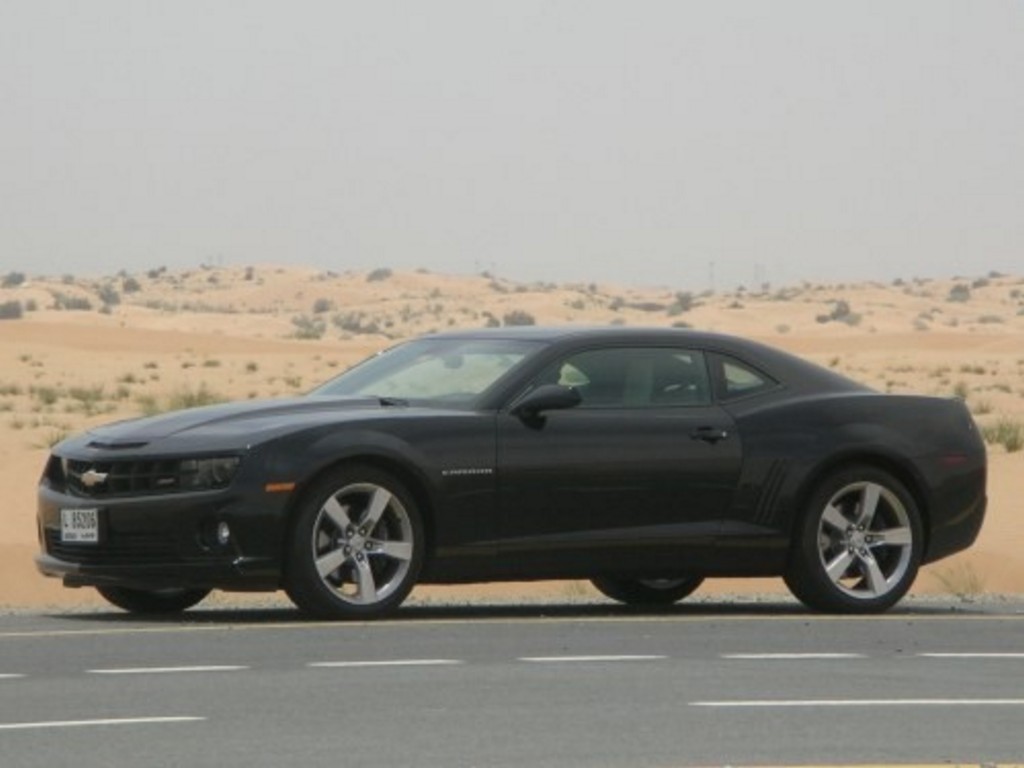
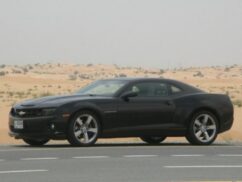
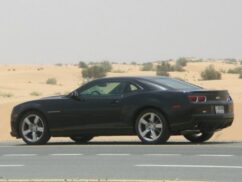
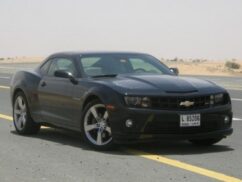
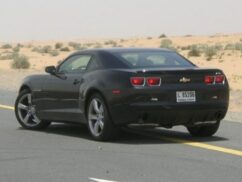
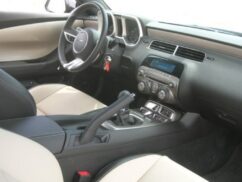
There are no comments. Be the first!